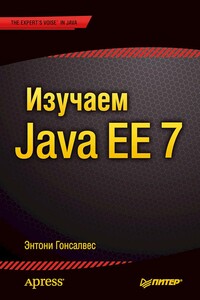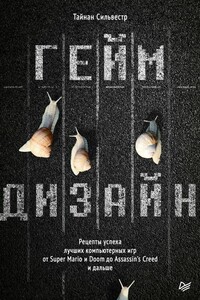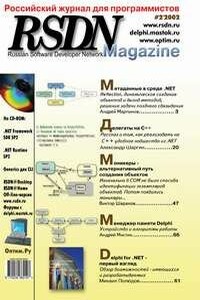DirectX 8. Начинаем работу с DirectX Graphics - [15]
> break;
> case WM_DESTROY:
> PostQuitMessage(0);
> break;
> case WM_MOVE:
> g_pDisplay->UpdateBounds();
> break;
> case WM_SIZE:
> g_pDisplay->UpdateBounds();
> break;
> default:
> return DefWindowProc(hWnd, uMsg, wParam, lParam);
> break;
> }
> return 0;
>}
Standard Windows Procedure function here. On the WM_CREATE event, we initialize DirectDraw, and set our g_bActive flag to true, so our GameLoop() function is executed. When WM_CLOSE is called, we want to set our active flag to false (again, so our app doesn't try to draw to our DDraw screen after its been destroyed), then call our CleanUp() function, and finally destroy our window. It's important that you handle the WM_MOVE and WM_SIZE events, because otherwise DirectDraw will not know the window has been moved or resized and will continue drawing in the same position on your screen, in spite of where on the screen the window has moved.
>bool InitDD(HWND hWnd) {
> //dd init code
> g_pDisplay = new CDisplay();
> if (FAILED(g_pDisplay->CreateWindowedDisplay(hWnd, 640, 480))) {
> MessageBox(NULL, "Failed to Initialize DirectDraw", "DirectDraw Initialization Failure", MB_OK | MB_ICONERROR);
> return false;
> }
> return true;
>}
The infamous InitDD() function… but wait, it's only several lines! This is what the common libs were made for! We now have all the DirectDraw setup garbage out of the way, effortlessly! Again, you'll notice that it's done a lot for you. If you don't really care to know the exact procedure of what has been abstracted from you, at least get the gist of it. It will help out if you have to go back and change the cooperative level or whatnot. Note that this is a boolean function, so if you like, you can do error checking (which I, for some reason or another, decided to omit in this article).
>void CleanUp() {
> SAFE_DELETE(g_pDisplay);
>}
Simple enough. This function calls on the SAFE_DELETE macro defined in dxutil to delete our display object, and call the destructor.
>void MainLoop() {
> g_pDisplay->CreateSurfaceFromText(&g_pText, NULL, "DDraw using Common Files", RGB(0,0,0), RGB(0,255,0));
> g_pDisplay->Clear(0);
> g_pDisplay->Blt(0, 0, g_pText, 0);
> g_pDisplay->Present();
> g_pText->Destroy();
>}
This is where you'd want to put your game. In order to give you an example of how surface objects work, we've made a simple text surface and drawn some text onto it. Note that we destroy g_pText at the end, because it is recreated every cycle and not doing so would eventually eat up quite a bit of memory.
>int WINAPI WinMain(HINSTANCE hInstance, HINSTANCE hPrevInstance, LPSTR lpCmdLine, int iShowCmd) {
> WNDCLASSEX wc;
> HWND hWnd;
> MSG lpMsg;
> wc.cbClsExtra=0;
> wc.cbSize=sizeof(WNDCLASSEX);
> wc.cbWndExtra=0;
> wc.hbrBackground=(HBRUSH)GetStockObject(BLACK_BRUSH);
> wc.hCursor=LoadCursor(NULL, IDC_ARROW);
> wc.hIcon=LoadIcon(NULL, IDI_APPLICATION);
> wc.hIconSm=LoadIcon(NULL, IDI_APPLICATION);
> wc.hInstance=hInstance;
> wc.lpfnWndProc=WndProc;
> wc.lpszClassName="wc";
> wc.lpszMenuName=0;
> wc.style=CS_HREDRAW | CS_VREDRAW;
> if (!RegisterClassEx(&wc)) {
> MessageBox(NULL, "Couldn't Register Window Class", "Window Class Registration Failure", MB_OK | MB_ICONERROR);
> return 0;
> }
> hWnd = CreateWindowEx(NULL, "wc", "DirectDraw Common Files in Action", WS_POPUPWINDOW, CW_USEDEFAULT, CW_USEDEFAULT, 640, 480, 0, 0, hInstance, 0);
> if (hWnd == NULL) {
> MessageBox(NULL, "Failed to Create Window", "Window Creation Failure", MB_OK | MB_ICONERROR);
> return 0;
> }
> ShowWindow(hWnd, SW_SHOW);
> UpdateWindow(hWnd);
> while (lpMsg.message != WM_QUIT) {
> if(PeekMessage(&lpMsg, 0, 0, 0, PM_REMOVE)) {
> TranslateMessage(&lpMsg);
> DispatchMessage(&lpMsg);
> } else if(g_bActive) {
> MainLoop();
> }
> }
> return lpMsg.wParam;
>}
The longest function in our application, WinMain(). As usual, we setup our window class, create our window, show and update it, and go into the message loop. The loop is different from usual because we dont want the processing of our game to interfere with the processing of messages. We use our g_bActive flag to see if its safe to call our game loop, which involves blitting things onto the screen, and at the end of it all we finally return lpMsg.wParam (I'm honestly not sure why, but thats how it's done in every other Win32 app, so oh well).
Pretty simple, huh? 135 lines of code and we're already blitting stuff to the screen. Feel free to explore these classes further, and experiment with things like color keying, loading surfaces from bitmaps, ect. This is a very cool shortcut to using DDraw. It makes things easy without sacrificing control (you can always go back and edit the classes if you want) or performance. One thing to note is that on my computer if I don't draw anything onto the screen using this framework, the application will lock up (which is why I've included text output here). This shouldn't be much of an issue, seeing as how your game will more than likely be blitting things onto the screen (unless there's some new art style which I'm not aware of).
Have fun!
Разработка графического движка
#1: Введение

Java Enterprise Edition (Java EE) остается одной из ведущих технологий и платформ на основе Java. Данная книга представляет собой логичное пошаговое руководство, в котором подробно описаны многие спецификации и эталонные реализации Java EE 7. Работа с ними продемонстрирована на практических примерах. В этом фундаментальном издании также используется новейшая версия инструмента GlassFish, предназначенного для развертывания и администрирования примеров кода. Книга написана ведущим специалистом по обработке запросов на спецификацию Java EE, членом наблюдательного совета организации Java Community Process (JCP)

Что такое ГЕЙМДИЗАЙН? Это не код, графика или звук. Это не создание персонажей или раскрашивание игрового поля. Геймдизайн – это симулятор мечты, набор правил, благодаря которым игра оживает. Как создать игру, которую полюбят, от которой не смогут оторваться? Знаменитый геймдизайнер Тайнан Сильвестр на примере кейсов из самых популярных игр рассказывает как объединить эмоции и впечатления, игровую механику и мотивацию игроков. Познакомитесь с принципами дизайна, которыми пользуются ведущие студии мира! Создайте игровую механику, вызывающую эмоции и обеспечивающую разнообразие.

В книге рассказывается история главного героя, который сталкивается с различными проблемами и препятствиями на протяжении всего своего путешествия. По пути он встречает множество второстепенных персонажей, которые играют важные роли в истории. Благодаря опыту главного героя книга исследует такие темы, как любовь, потеря, надежда и стойкость. По мере того, как главный герой преодолевает свои трудности, он усваивает ценные уроки жизни и растет как личность.

В книге рассказывается история главного героя, который сталкивается с различными проблемами и препятствиями на протяжении всего своего путешествия. По пути он встречает множество второстепенных персонажей, которые играют важные роли в истории. Благодаря опыту главного героя книга исследует такие темы, как любовь, потеря, надежда и стойкость. По мере того, как главный герой преодолевает свои трудности, он усваивает ценные уроки жизни и растет как личность.

В книге рассказывается история главного героя, который сталкивается с различными проблемами и препятствиями на протяжении всего своего путешествия. По пути он встречает множество второстепенных персонажей, которые играют важные роли в истории. Благодаря опыту главного героя книга исследует такие темы, как любовь, потеря, надежда и стойкость. По мере того, как главный герой преодолевает свои трудности, он усваивает ценные уроки жизни и растет как личность.

Python - объектно-ориентированный язык сверхвысокого уровня. Python, в отличии от Java, не требует исключительно объектной ориентированности, но классы в Python так просто изучить и так удобно использовать, что даже новые и неискушенные пользователи быстро переходят на ОО-подход.